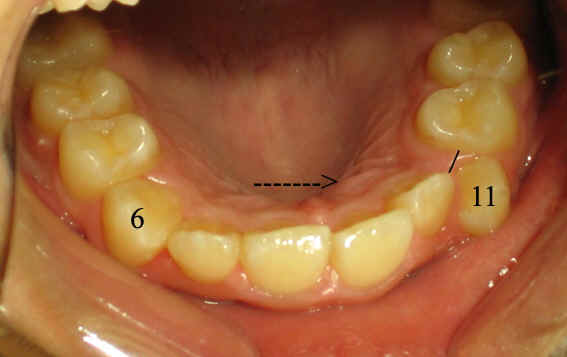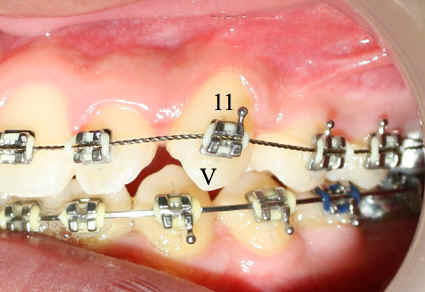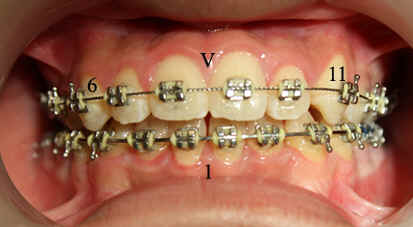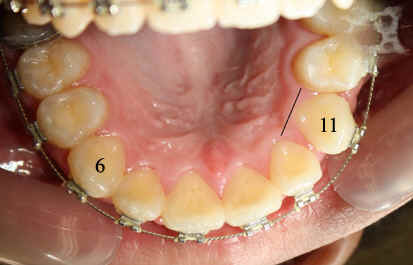|
|
 |
|
Fig.1 |
Fig.2 |
|
|
 |
|
Fig.3 |
Fig.4 |
 |
 |
|
Fig.5 |
Fig.6 |
|
|
 |
|
Fig.1 |
Fig.2 |
|
|
 |
|
Fig.3 |
Fig.4 |
 |
 |
|
Fig.5 |
Fig.6 |
Dental Education Lecture: Canine
Kevin is a 12 year-old handsome boy, but his upper left canine is too bulging (#11 as compared to #6 (right canine) in Fig.1). It appears that the space is too narrow for the bulging canine (black line next to 11 in Fig.2 (biting view of the upper teeth)). The narrow space is probably due to shift of upper front teeth to the left (your right-hand side) as indicated by arrow in Fig.2 (----->). When we draw upper (V in Fig.1) and lower (1) midlines of the front teeth, the shifting is the most likely reason for the bulging canine.
It looks like that we need to push the upper front teeth to the right (your left) to make a space large for the bulging canine. After six months of brace action, we gain enough space for the bulging canine. Every day Kevin places elastic bands (E, Fig.3 (side view)) between a hook attached to the bulging canine and its counterpart in the bottom. Every time he opens his mouth (talking or yawning), the upper canine is drawn downward a little bit. In 4 weeks the canine has almost reached its normal position (Fig.4). Now he does not look like a doggy anymore, but he can bite like a big dog. You can see how sharp the canine is (indicated by the tip of V in Fig.4). One month later, the canine arrives at its destination (Fig.5 as compared to Fig.1). The upper and lower midlines (indicated by V and 1) coincide. We have created enough space for it (Fig.6 as compared to Fig.2).
Return to Kid, Ortho Cases
Xin Wei, DDS, PhD, MS 1st edition 10/24/2009, last revision 07/17/2016